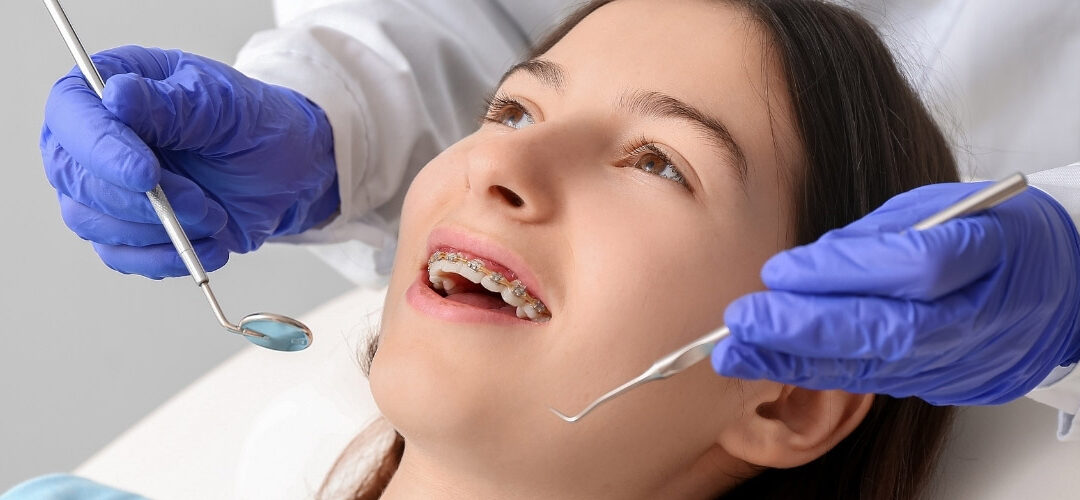The Benefits of Selecting a Cumming Orthodontist for Your Braces and Aligners
Comprehensive Overview to Orthodontics Procedures for Fixing Oral Misalignments
In the world of orthodontics, the journey to accomplishing a flawlessly straightened smile involves a myriad of treatments customized to deal with dental misalignments. From conventional braces to unseen aligners and also surgical options, the field of orthodontics uses a variety of options to resolve differing levels of oral irregularities. Understanding the complexities of each treatment, including their mechanisms, benefits, and potential drawbacks, is essential in making informed decisions concerning one's orthodontic therapy. As we browse via the thorough overview to orthodontic treatments for dealing with dental misalignments, the intricate information of each technique will unfold, clarifying the path toward a unified and useful oral placement.
Orthodontic Procedures Review

Along with conventional dental braces and clear aligners, orthodontists may additionally suggest various other treatments like headgear, palatal expanders, or retainers to resolve particular placement problems (cumming orthodontics). These procedures are tailored per client's one-of-a-kind needs and may entail a mix of therapies to attain the desired results. Normal changes and monitoring are critical parts of orthodontic therapy to guarantee progression is on track and to make any kind of essential modifications in the process. By going through orthodontic treatments, patients can not only accomplish a straighter grin however additionally improve their overall oral health and wellness and feature.
Standard Braces: Exactly How They Work
When considering orthodontic treatments for dental imbalances, conventional dental braces stick out as a tried and true method for correcting teeth placing. Conventional dental braces contain braces, cables, and bands that interact to apply continuous stress on the teeth, gradually relocating them into the preferred placement. The braces are connected to the teeth using a special adhesive, and the cords are threaded with the braces. By adjusting the stress of the wires, orthodontists can regulate the direction and force used to each tooth, directing them right into correct placement gradually.
As pressure is applied to the teeth with the braces, the bone surrounding the teeth is reshaped to sustain the new tooth positions. Individuals will certainly need regular adjustments at the orthodontist's workplace to ensure the braces continue to apply the appropriate stress for efficient teeth motion.
Undetectable Aligners: Pros and Disadvantages
These clear, customized trays are practically undetectable when worn, making them an attractive option for people seeking an extra cosmetically pleasing orthodontic treatment. Clients can get rid of the aligners before consuming or cleaning their teeth, lowering the risk of food obtaining stuck in the appliance and streamlining the cleansing process.

Surgical Orthodontic Options
Surgical interventions in orthodontics present practical choices for attending to complicated oral misalignments that might not be properly settled via standard orthodontic therapies. While standard dental braces and unseen aligners can remedy numerous orthodontic issues, certain instances require surgical treatment to attain ideal results. Surgical orthodontic alternatives are commonly suggested for serious malocclusions, considerable jaw inconsistencies, and cases where the underlying bone framework needs modification to attain appropriate alignment.
One usual medical orthodontic treatment is orthognathic surgical treatment, which involves rearranging the jaws to remedy functional concerns such as problem eating or talking. This surgical treatment is often carried out in collaboration article with an orthodontist that aids line up the teeth prior to and after the procedure. Surgical orthodontics might additionally include procedures to reveal influenced teeth, remove excess periodontal tissue, or reshape the jawbone to develop a much more unified facial account.
Before taking into consideration surgical orthodontic alternatives, clients undertake a detailed evaluation to determine the need and potential advantages of such treatments. invisalign. While surgical procedure may appear difficult, it can substantially improve both the function and aesthetics of the smile in situations where standard orthodontic therapies fail
Retainers and Post-Treatment Treatment

Post-treatment care involves complying with the orthodontist's directions carefully. This might consist of proper oral hygiene methods, going to follow-up visits, and putting on the retainers as suggested. Failure to follow post-treatment care instructions can lead to relapse, where the teeth slowly move back towards their original positions. Constant retainer wear, great oral hygiene, and routine dental check-ups are necessary for keeping the outcomes achieved through orthodontic surgical treatment and guaranteeing the long-term security of the remedied dental positioning.
Final Thought
In final thought, orthodontic treatments use different options for correcting oral misalignments. Traditional dental braces utilize metal brackets and wires to change teeth right into proper placement. Undetectable aligners offer a more very discreet alternative but might not appropriate for all cases. Surgical orthodontic alternatives are offered for more serious misalignments. Retainers are generally utilized post-treatment to keep the teeth whitening treatment brand-new alignment. Generally, orthodontic procedures can properly improve oral health and visual appearance.
As we navigate via the extensive guide to orthodontic treatments for correcting oral imbalances, the intricate details of each approach will certainly unravel, shedding light on the path towards a functional and unified oral placement. - invisalign
One of the most common orthodontic treatments is the use of braces, which consist of steel braces and cords that apply mild pressure to slowly move teeth right into the wanted placement.When considering orthodontic treatments for dental misalignments, conventional dental braces stand out as a reliable method for correcting teeth positioning. Furthermore, unseen aligners might not be ideal for complex orthodontic issues that require more significant teeth movement, as they are usually suggested for moderate to moderate instances. Retainers are customized orthodontic devices designed to hold teeth in their corrected positions after the completion of orthodontic therapy.